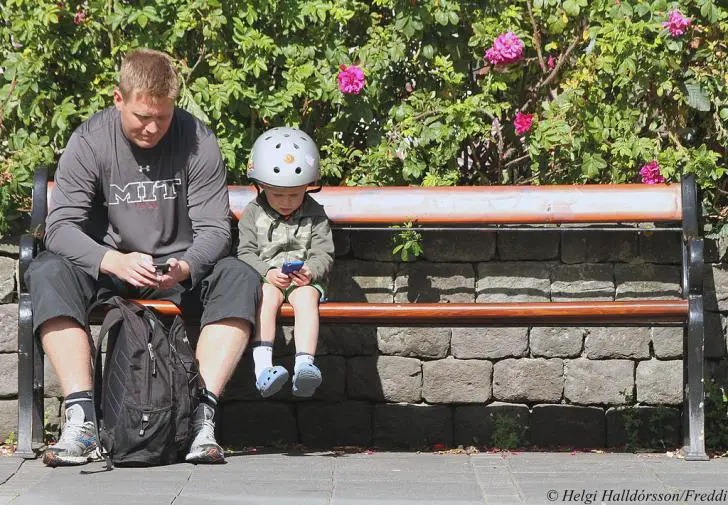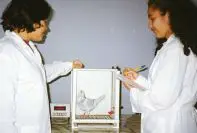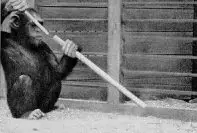The process of learning by watching others is called Observational learning. Observational learning is classified as a form of social learning. Instead of other forms of learning like Classical Conditioning and Operant Conditioning, no reinforcement is required. Instead, social models such as a parent, teacher, sibling or a friend are required for observational learning.
It is an important part of socialization, and can take place at any point in life. But, it’s mostly common during childhood as children learn variety of behaviors and activities through observation of their peers, family members and other authority figures in their life. Observational learning is also referred to as vicarious reinforcement, modeling, and shaping.
For example: A child learns to interact with other people by observing their parents. The parents are not teaching these behaviors directly. But, the child nevertheless, imitates different actions by watching others. In psychology, this is exactly what observational learning means.

[Related: Observational Learning Examples]
How Observational Learning Works?
Albert Bandura is the psychologist most linked with the term Observational learning. Bandura, with his researchers, demonstrated that human beings are naturally capable of observational learning. In one research, it was seen that even children just days old can imitate facial expressions.
If you’ve ever dealt with infants, you have seen children trying to mimic funny expressions, which in psychology, is a part of observational learning.
Bandura’s famous experiment Bobo doll experiment clearly showed that aggressive and violent actions performed by an adult were easily imitated by the children present.
According to his findings, children were more inclined to replicate the actions of an adult if the adult went unpunished or received rewards for their violent actions. However, in the cases where adults were punished for their aggressive behavior, children were less likely to repeat the same behaviors.
Stages of Observational Learning
Attention
Attention is the key for observers, as without being attentive to their surrounding they won’t be able to replicate the behavior. Also, observers’ expectations and emotional arousal toward the particular action also plays a key role.
Retention/Memory
Simply observing a behavior is not enough. The observer should also be able to remember or rehearse the particular action both physically and mentally. This depends on the observer’s ability to structure and code information.
Motor/Initiation
After observation, the observer should also be able to reproduce the behavior both physically and intellectually.
Motivation
Motivation is another important aspect of learning. Without motivation, the individual is not able to produce learned behavior.
Three Dimensional change brought by observational learning in an individual’s behavior
- Individual interprets the situation in a different way and might react on it.
- Change is caused due to the direct experiences of the individual rather than being in-born.
- The change is mostly permanent.
Factors That Influence Observational Learning
Bandura also came up with certain factors that are more likely to increase the chances of a behavior being imitated. They are:
- Behaviors observed from people who are warm and nurturing towards the observer.
- If the behavior is rewarded.
- When imitating behaviors has been rewarding in the past.
- Lack of confidence in one’s own abilities or knowledge.
- When behaviors are executed by authority figures.
- Like minded people of same age and sex.
- Behaviors from people who are of higher social status, and whom we admire.
- When the situation is confusing, unfamiliar or ambiguous, imitating others’ behavior seems like the safest bet.
Real World Applications for Observational Learning
The concept of observational learning is still quite inconclusive in some levels, especially because the general public isn’t as aware about the phenomenon as much as they should be.
One of the long-going arguments is that whether or not violence and aggressive behaviors in movies, TV programs and video games are harmful in a sense that behaviors seen might be imitated by children and adults alike. Bandura has already shown that children are likely to imitate aggressive behaviors seen on a film clip in his famous experiment.
The debate has been going on for years. It’s not like movies and games are ever going to get banned, but psychological research have indicated that watches violent actions in movies and games are likely to entice aggressive thoughts, behaviors and feelings in the observer. Also, researchers indicate that watching sexual behavior can also lead to imitation. Not everyone who watches violent contents in TV end up in prisons later in their life, but observational learning is in effect whether we like it or not.
Observational Learning as a Positive Force
Observational learning can and has been used as a positive force for the betterment of the world. TV programs are made targeting the audience in order to promote healthy behaviors across the world. Issues like pollution, family planning, transmission are also depicted through TV programs to increase awareness.
Observational learning is a powerful tool that has wide range of applications. Even though use of reinforcement, punishment and direct instruction is what comes to mind when we ponder on the concept of learning, huge deal of learning takes place subtly, even accidentally, just by watching the happenings around us. Other uses of observational learning are seen in education, counseling, work trainings and psychotherapy.




